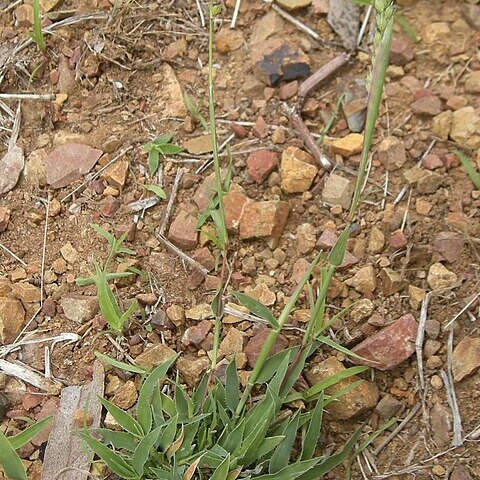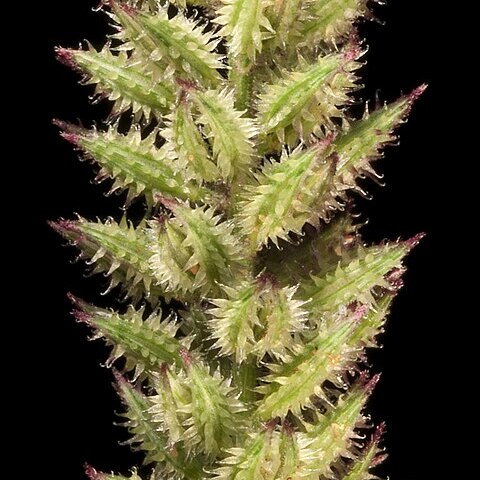An annual grass. The stems are 40 cm high. It can lie along the ground or be erect. The internodes of the stems are rough and hairy. The ligule in thin and less than 1 mm long. The leaf blades are rigid and narrow. They are spear shaped. They have a rounded base and rigid hairs along the edge. The flower spikes are 5-8 cm long. The spikelets are spiny and burr like.


